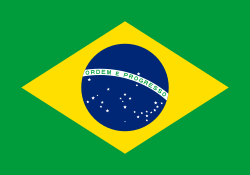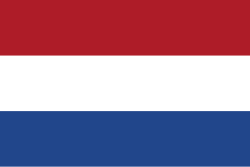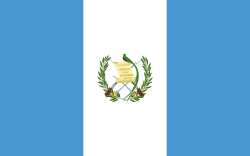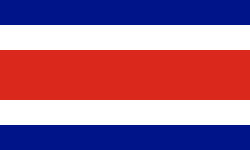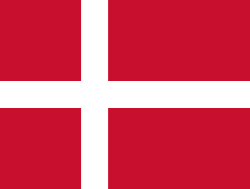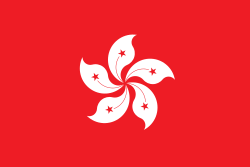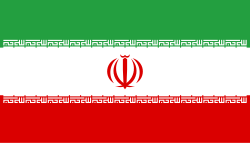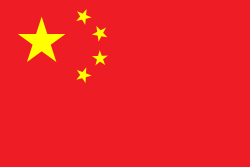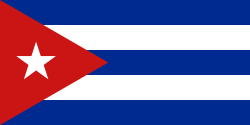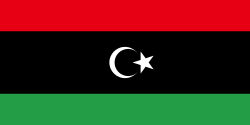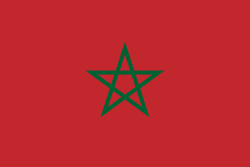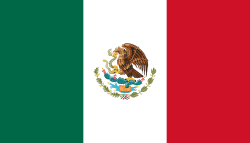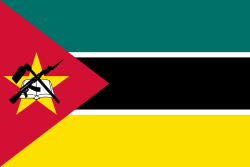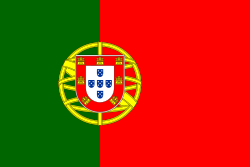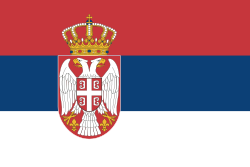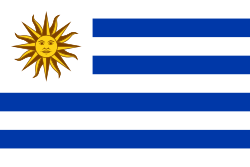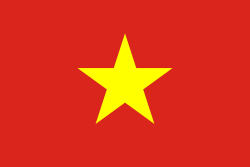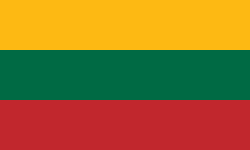Världsmästerskapet i futsal (Fifa)
| Världsmästerskapet i futsal | |
| Sport(er) | Futsal |
|---|---|
| Plats | Hela världen |
| Tidpunkt | November-december |
| År | 1989- |
| Geografisk omfattning | Hela världen |
| Regerande mästare | |
| Flest titlar | |
FIFA-världsmästerskapet i futsal - officiellt FIFA Futsal World Cup, är en mästerskapstävling i futsal för herrlandslag (Futsal är en variant av fotboll som spelas på en mindre spelyta med färre utespelare.). Turneringen startade 1989 och sedan 1992 har den spelat vart fjärde år. I huvudturneringen deltar sedan 2008, 20 landslag.
Lagen kvalificerar sig genom spel i olika geografiskt bestämda kvalgrupper, med undantag för värdländer, som är direktkvalificerade.
Deltagare
Fram till VM 2016 har totalt 47 olika landslag deltagit i VM-slutspelet. Bakgrundsfärgen på respektive ruta visar att landslaget vann en medalj (guld, silver eller brons).
| Mästerskap Landslag | Antal VM | 1989 | 1992 | 1996 | 2000 | 2004 | 2008 | 2012 | 2016 |
|---|---|---|---|---|---|---|---|---|---|
| 1 | 15 | ||||||||
| 8 | 8 | 7 | 9 | 7 | 4 | 6 | 7 | 1 | |
| 7 | 11 | 12 | 15 | 15 | 15 | 20 | 18 | ||
| 1 | 6 | ||||||||
| 3 | 4 | 6 | 8 | ||||||
| 8 | 1 | 1 | 1 | 2 | 3 | 1 | 1 | 9 | |
| 2 | 4 | 12 | |||||||
| 4 | 16 | 11 | 17 | 15 | |||||
| 1 | 10 | ||||||||
| 6 | 12 | 6 | 9 | 13 | 14 | 8 | |||
| 4 | 12 | 10 | 19 | 21 | |||||
| 1 | 10 | ||||||||
| 7 | 4 | 11 | 10 | 11 | 5 | 10 | 3 | ||
| 7 | 5 | 11 | 5 | 2 | 3 | 3 | 10 | ||
| 4 | 13 | 13 | 12 | 11 | |||||
| 1 | 12 | ||||||||
| 2 | 14 | 11 | |||||||
| 3 | 15 | 13 | 19 | ||||||
| 1 | 16 | ||||||||
| 1 | 5 | ||||||||
| 5 | 16 | 16 | 14 | 15 | 22 | ||||
| 1 | 18 | ||||||||
| 2 | 16 | 24 | |||||||
| 1 | 14 | ||||||||
| 2 | 23 | 20 | |||||||
| 1 | 22 | ||||||||
| 1 | 23 | ||||||||
| 4 | 2 | 5 | 7 | 8 | |||||
| 1 | 14 | ||||||||
| 2 | 16 | 17 | |||||||
| 6 | 6 | 13 | 10 | 7 | 12 | 7 | |||
| 1 | 8 | ||||||||
| 5 | 3 | 5 | 9 | 8 | 4 | ||||
| 6 | • | 9 | 3 | 4 | 4 | 5 | 2 | ||
| 3 | 20 | 21 | 24 | ||||||
| 1 | 16 | ||||||||
| 1 | • | • | • | • | • | • | 9 | ||
| 8 | 9 | 3 | 2 | 1 | 1 | 2 | 2 | 5 | |
| 5 | 13 | 12 | 14 | 15 | 14 | ||||
| 3 | 8 | 11 | 13 | ||||||
| 5 | 4 | 6 | 8 | 6 | 13 | ||||
| 1 | 7 | ||||||||
| 3 | 6 | 9 | 17 | ||||||
| 5 | 3 | 2 | 10 | 7 | 18 | ||||
| 1 | 19 | ||||||||
| 1 | 16 | ||||||||
| 1 | 14 | ||||||||
| 16 | 16 | 16 | 16 | 16 | 20 | 24 | 24 | ||
- Anmärkningar
Medaljörer
| År | Värdnation | Final | Match om tredjepris | ||||
|---|---|---|---|---|---|---|---|
| Vinnare | Resultat | Tvåa | Trea | Resultat | Fyra | ||
| 1989 | Brasilien | 2 – 1 | USA | 3 – 2 | |||
| 1992 | Brasilien | 4 – 1 | Spanien | 9 – 6 | |||
| 1996 | Brasilien | 6 – 4 | Ryssland | 3 – 2 | |||
| 2000 | Spanien | 4 – 3 | Portugal | 4 – 2 | |||
| 2004 | Spanien | 2 – 1 | Brasilien | 7 – 4 | |||
| 2008 | Brasilien | 2 – 2 (4 – 3 str.) | Italien | 2 – 1 | |||
| 2012 | Brasilien | 3 – 2 | Italien | 3 – 0 | |||
| 2016 | Argentina | 5 – 4 | Iran | 2 – 2 (4 – 3 str.) | |||
| 2021 | Portugal | 2 – 1 | Brasilien | 4 – 2 | |||
| 2024 | Brasilien | 2 – 1 | Ukraina | 7 – 1 | |||
Medaljligan
| Nr | Land | Guld | Silver | Brons | Antal medaljer |
|---|---|---|---|---|---|
| 1 | 6 | 1 | 2 | 9 | |
| 2 | 2 | 3 | 1 | 6 | |
| 3 | 1 | 2 | 0 | 3 | |
| 4 | 1 | 0 | 1 | 2 | |
| 5 | 0 | 1 | 2 | 3 | |
| 6 | 0 | 1 | 1 | 2 | |
| 7 | 0 | 0 | 1 | 1 | |
| 8 | 0 | 1 | 0 | 1 | |
| 9 | 0 | 0 | 1 | 1 | |
| 10 | 0 | 0 | 1 | 1 |
Skyttekungar i respektive VM-turnering
Följande spelare har gjort flest mål och blivit "skyttekungar" i de VM-slutspel som arrangerats hittills. Siffrorna anger antalet mål.
- 1989 Laszlo Zsadanyi (Ungern) - 7 mål (6 matcher)
- 1992 Saeid Rajabi (Iran) - 16 mål (8 matcher)
- 1996 Manoel Tobias (Brasilien) - 14 mål (8 matcher)
- 2000 Manoel Tobias (Brasilien) - 19 mål (8 matcher)
- 2004 Falcao (Brasilien) - 13 mål (8 matcher)
- 2008 Pula (Ryssland) - 16 mål (9 matcher)
- 2012 Eder Lima (Ryssland) - 9 mål (5 matcher)
Referenser
Externa länkar
| ||||||||||||||||||||||||||
| |||||||||||||||||
Media som används på denna webbplats
Black right-pointing triangle ▶, U+25B6 out of Unicode-Block Geometric Shapes (25A0–25FF)
Chinese Taipei Olympic Flag. According to the official website of Chinese Taipei Olympic Committee, Blue Sky(circle) & White Sun(triangles) above the Olympic rings is neither the National Emblem of the Republic of China, nor the Party Emblem of Kuomintang (KMT), but a design in between, where the triangles do not extend to the edge of the blue circle, as registered at International Olympic Committee in 1981 and digitally rendered in 2013. Besides, the blue outline of the five-petaled plum blossom is broader than the red one. Moreover, the CMYK code of the blue one and the Blue Sky & White Sun is "C100-M100-Y0-K0", and different from the Olympic rings (C100-M25-Y0-K0). Note that it's the only version recognized by IOC.
Chinese Taipei Olympic Flag. According to the official website of Chinese Taipei Olympic Committee, Blue Sky(circle) & White Sun(triangles) above the Olympic rings is neither the National Emblem of the Republic of China, nor the Party Emblem of Kuomintang (KMT), but a design in between, where the triangles do not extend to the edge of the blue circle, as registered at International Olympic Committee in 1981 and digitally rendered in 2013. Besides, the blue outline of the five-petaled plum blossom is broader than the red one. Moreover, the CMYK code of the blue one and the Blue Sky & White Sun is "C100-M100-Y0-K0", and different from the Olympic rings (C100-M25-Y0-K0). Note that it's the only version recognized by IOC.
The national flag of Kingdom of Thailand; there are total of 3 colours:
- Red represents the blood spilt to protect Thailand’s independence and often more simply described as representing the nation.
- White represents the religion of Buddhism, the predominant religion of the nation
- Blue represents the monarchy of the nation, which is recognised as the centre of Thai hearts.
The civil ensign and flag of Belgium. It is identical to Image:Flag of Belgium.svg except that it has a 2:3 ratio, instead of 13:15.
Flag of Iran. The tricolor flag was introduced in 1906, but after the Islamic Revolution of 1979 the Arabic words 'Allahu akbar' ('God is great'), written in the Kufic script of the Qur'an and repeated 22 times, were added to the red and green strips where they border the white central strip and in the middle is the emblem of Iran (which is a stylized Persian alphabet of the Arabic word Allah ("God")).
The official ISIRI standard (translation at FotW) gives two slightly different methods of construction for the flag: a compass-and-straightedge construction used for File:Flag of Iran (official).svg, and a "simplified" construction sheet with rational numbers used for this file.
Kanadas flagga, införd 1965; denna version med Pantone‐nyanser. Nuvarande utformning ersatte den tidigare kanadensiska Red Ensign.
Det är enkelt att lägga till en ram runt den här bilden
Flag of Portugal, created by Columbano Bordalo Pinheiro (1857–1929), officially adopted by Portuguese government in June 30th 1911 (in use since about November 1910). Color shades matching the RGB values officially reccomended here. (PMS values should be used for direct ink or textile; CMYK for 4-color offset printing on paper; this is an image for screen display, RGB should be used.)
Black down-pointing triangle ▼, U+25BC out of Unicode-Block Geometric Shapes (25A0–25FF)
Official flag used by the Fédération Internationale de Football Association (FIFA) to represent Chinese Taipei in association football matches. Also used at the Olympics from 1986 to 2010.
Map of the members of FIFA according to their confederation, on the 1st January 2006 (before this date, see this map):
- CONCACAF – Confederation of North, Central American and Caribbean Association Football in North, Central and South America
- CONMEBOL – South American Football Confederation in South America


